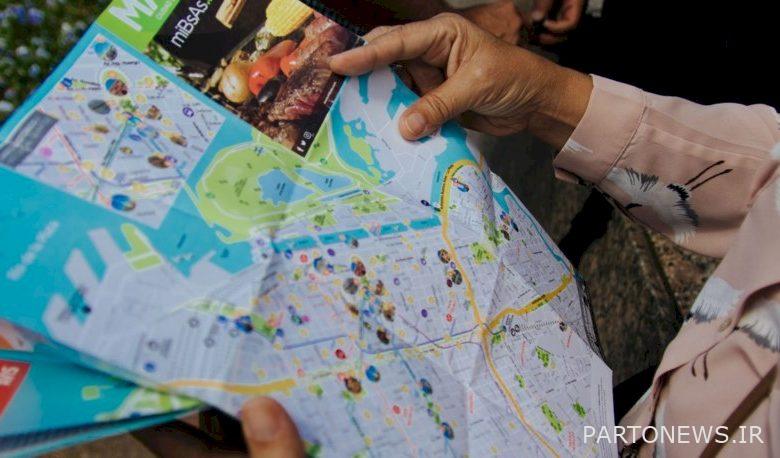Content production strategy in tourism

An effective content marketing strategy allows you to spend less time on ideas and more time to create and distribute content. Travel companies suffer from the choice of how they produce content. From stunning snapshots and user-generated content to clever captions and destination descriptions, there’s plenty of DMO to do. But let’s be realistic: Regularly delivering compelling and successful content can be both expensive and time consuming.
This is especially true when you are tied to a tight schedule or a limited budget.
solution? Start planning effectively in advance.
An effective content marketing strategy allows you to spend less time on ideas and more time to create and distribute content.
In this guide, we will explain exactly how to do it.
Why do you need a content strategy?
It is no secret that crazy travel marketers are busy. At first glance, strategizing may seem like another thing on your to-do list. However, the benefits of drawing your content are well documented. This includes everything from social media content to blog posts and advertising campaigns.
For starters, a recent CMI survey found that thinking about the future helps marketers stay focused on their team goals and create more relevant content for their audience. With more marketing budgets, higher expectations and the need to meet – both come with your content strategy. Knowing what you want, you can more easily secure what you need in terms of resources (marketing tools, effective budgeting, social advertising) and consider that having enough time and resources to create new content are the two main challenges for content marketers today. Having a defined strategy will help you avoid headaches due to lack of time or cash when you want to reach your deadlines.
3 Elements of a Winning Content Strategy
Just as there is no right way to plan a trip, there is no one-size-fits-all approach when it comes to your content marketing strategy and goals.
Regardless of your brand goals or destination, the following principles apply to almost any content strategy.
1. The better you know your target audience, the easier it will be for content travelers to generate content.
Personas draw a picture of your potential customers and analyze specific details of your audience so you can fine-tune your messages. For example: What are the goals and desires of your passengers?
What are their drawbacks and pain points?
Where do they go online?
What other brands do they like?
Tools like free Xtensio persona templates can help you create in-depth buyer characters from scratch.
Need more proof that the characters work? Check out how Visit Indy got 3-fold clicks on its Facebook ads through character-based content.
Let’s just say that you have not yet completed the persona process. No worries!
Undoubtedly, one of the best ways to better understand travelers is to directly select the brains of your colleagues and customers.
Consider, for example, interviewing visitor or reception desk staff with frequently asked questions or requests from people at various stages of your travel planning process, such as travel or destination planning. The answers may surprise you and act as valuable insights for your characters.
Also, if you are looking for first-hand data, you can send a quick survey via email to your current customers.
2. Create a comprehensive content calendar
Assuming you know your passengers from inside and outside, you are ready to start producing content.
From social media posts to blog posts and beyond, you are likely to manipulate with a variety of creations. If you work with writers or influencers, you also face relationships and deadlines that must be met.
All of this demonstrates the need to create a content calendar that you can adhere to realistically.
Whether you make your own or use our completely free content calendar template, consider the following as part of any calendar entry:
Type of content: Blog posts, social posts, infographics, visitor guides and more.
Completion date: The date that your content must be completed to be reviewed
Release date: The date your content is played
Campaign: Distinguish between ownership (blog post, social post), earned (media publishing, effective campaign) or monetary (social advertising, print advertising)
Person (s): Specifies who your content is intended for
Salaries and Credits: Determine if you have the right licenses and rights for your creations (think of UGC rights)
Target: What is the purpose of your content (brand awareness, conversions)
Cost: What is the dollar value associated with a piece of content?
Calendars have a double duty to organize your workload and at the same time give you something to present to managers and senior people for responsibility. When someone asks you what you are working on, your calendar writes it in black and white.
3- Review your results, then repeat
To sum it all up, let’s talk about data!
Something to think about: 63% of social marketers regularly share performance and return data with their bosses.
Every content marketing strategy today has to be data based. This means regularly checking your metrics and KPIs to see what works and what doesn’t.
For example, do you know which part of the content gets the most traffic or which visual assets get the most interaction? What about the top channels that drive visitors to your site?
Regular reviews of Google Analytics can show you which distribution channels, such as paid advertising, organic search, or referrals, work best. In turn, you can focus all your attention on these channels and make adjustments for the weak.
Tools like Crowdriff can help you deepen the performance of visual content. For example, you can see what kind of images your travelers or guests are most attracted to.

